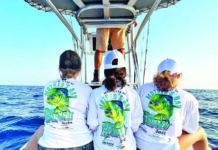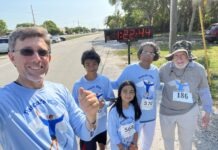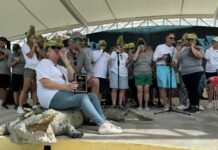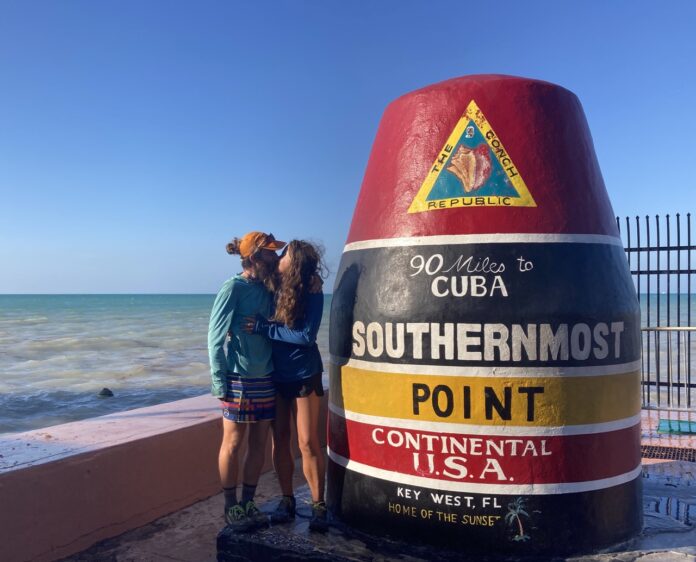
I took my backpack off to rest on the steep, rock-strewn incline toward Wildcat D Peak in the White Mountains of New Hampshire to talk with my mom on the phone. It was Aug. 5, 2022, her birthday, a celebration I was missing since I was 1,872 miles into a 2,194-mile hike of the Appalachian Trail.
As we talked, I heard a woman climbing down the nearly vertical rock face just above me. When she made it to where I sat after a few minutes of treacherous descent, I saw that she was young, bright and cheerful, despite the rocks. She commented how strikingly comforting it was to see another young woman having a normal conversation with her mom at the base of a terrifying climb. I was thrilled to know another woman around my age had successfully conquered those 300 miles still ahead of me.
When we parted ways, I felt an invigoration and drive that I could finish this long journey. Exactly 20 days later, I did.
I had nearly forgotten that day until I saw a bearded man with a pin-wheel flag sticking out of his large backpack and a woman pushing a covered stroller down the shoulder of U.S. 1.
Perhaps a normal response would have been fear for their safety as I zoomed past at 50 mph. Instead, I turned around in the parking lot of Lorelei, crossed the street and parked in front of the Sandal Factory in Islamorada. The woman was inside the store looking at sunglasses, so just the man and the covered stroller stood outside as I approached.
“I just have two oranges. Do you want them?” I asked the man.
His reddish beard was even longer than I’d thought, and so was his hair, tied up beneath an orange baseball cap. I looked down and saw the head of an elderly dog poke through the top of the covered stroller.
“Well, I guess so. I can never say no to fresh fruit,” the man responded.
The door to the store opened, and the woman came outside and grabbed one of the oranges. It took a few moments to place the familiarity of her face, but suddenly we were hugging like old friends. Standing in front of me was the same cheerful face from the mountainside in New Hampshire.
Since that day in August, she had been hiking south toward Key West.
Now, as we talked near the Sandal Factory, 32-year-old Owen “At Home” Eigenbrot and 33-year-old Ally “Spice” Russell, stood 83.4 miles away from completing a through-hike of the Eastern Continental Trail (ECT), a backpacking trip of more than 4,400 miles, from Quebec, Canada to Key West. Eigenbrot and Russell, who have also hiked the Pacific Crest Trail and the Continental Divide Trail, are among only hundreds who have completed the ECT since John Brinda first hiked the route in 1997.
Over the last year, Eigenbrot and Russell hiked 400 miles of ATV roads, overgrown trails and oceanside in Canada, where they hardly saw other hikers but walked alongside swimming whales, lounging seals and a plethora of moose and beavers. They traversed some of the east coast’s highest peaks and most beautiful overlooks between Maine and Georgia on the 2,194-mile Appalachian Trail, which Eigenbrot completed northbound, and Russell completed southbound. They hiked 72 miles on the Benton MacKaye Trail and the 335-mile Pinhoti Trail and the 175-mile Alabama Road Walk. They walked alongside the alligators and cypress trees decorating the 1,400-mile Florida Trail until their feet hit pavement on U.S. 1.
“There’s a stream of our footprints all along the Appalachian Mountains,” Russell said.
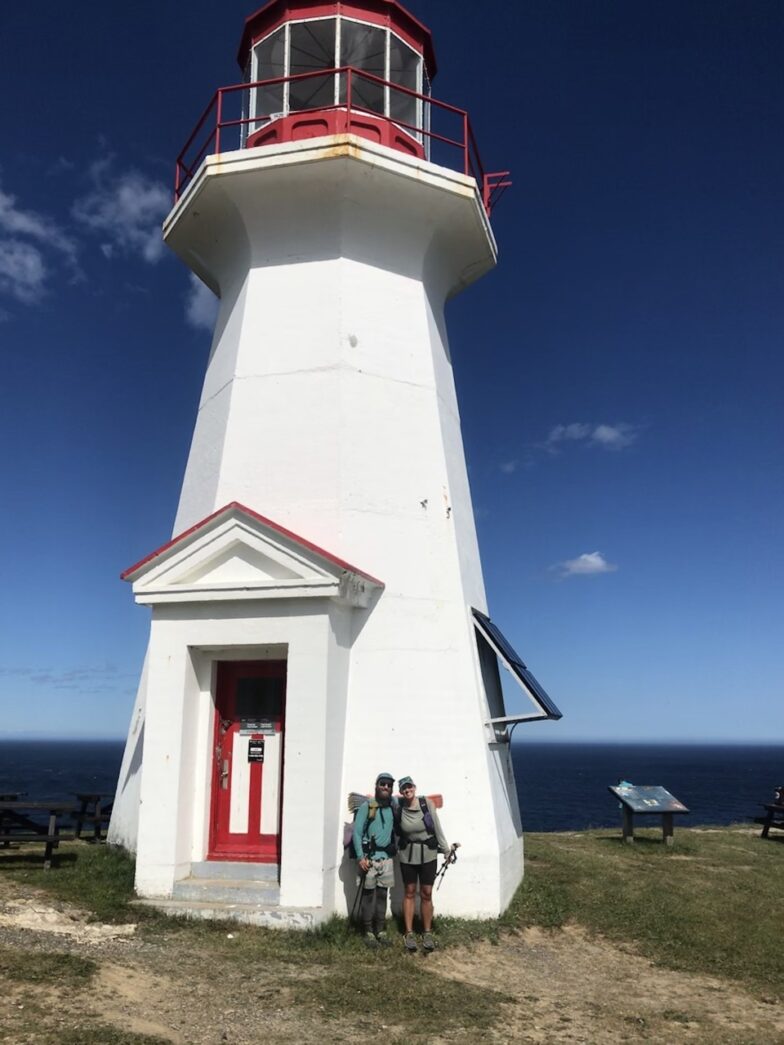
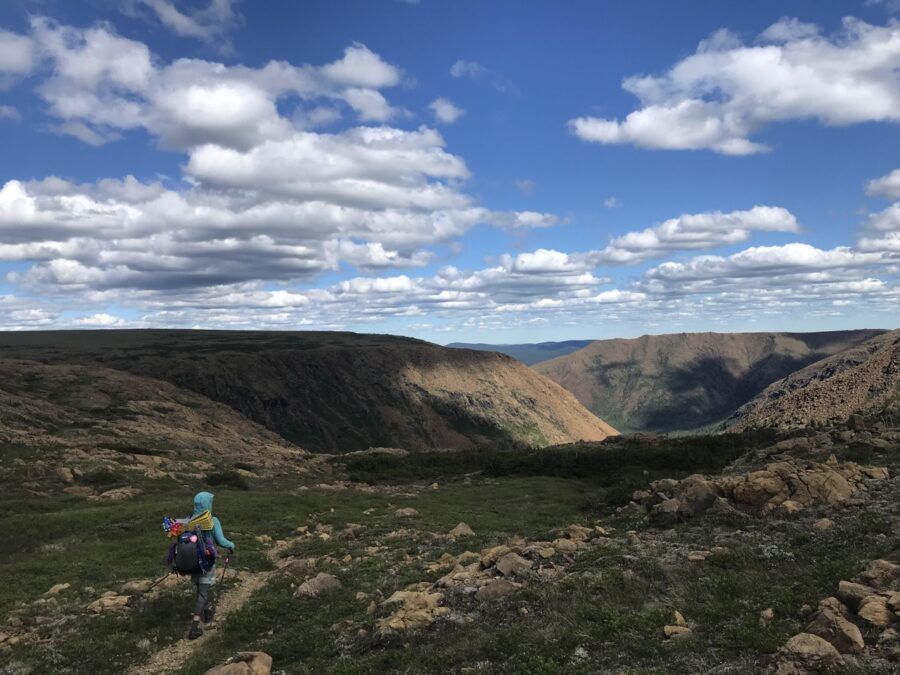
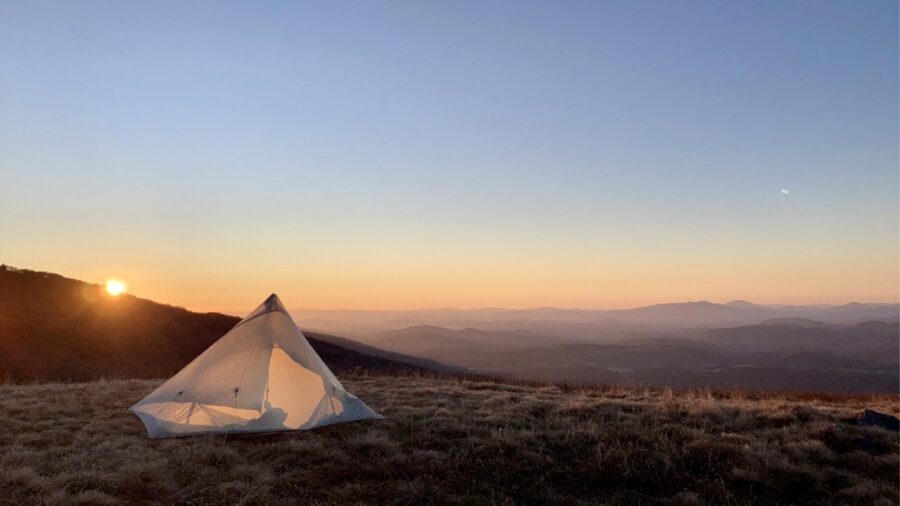
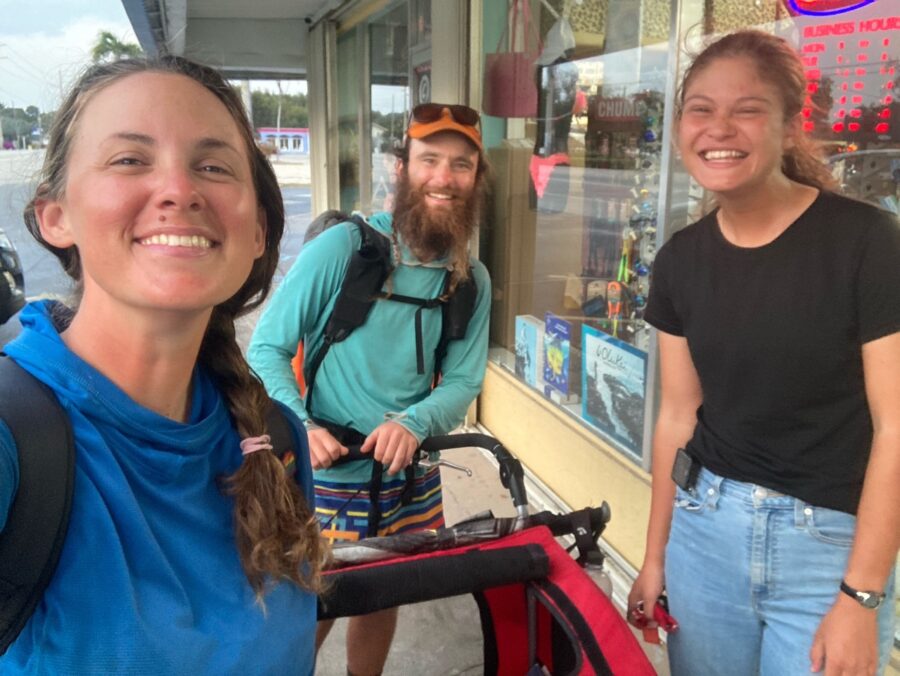
During the past year, they carried everything they needed in their backpacks, slept beneath the stars, woke up to singing birds, summited mountain peaks, walked through rainstorms and only trekked back into civilization every few days to resupply food and shower. And it was coming to a close in the never-ending ocean views and traffic of the 106-mile Overseas Heritage Trail that parallels U.S. 1 through the Florida Keys.
“It seemed like a weird thing to be doing in the first place, like it was even going beyond the natural ending point,” Eigenbrot said. “But what a cool bonus to add on to the end of this. How lucky that we get to leave the mainland and hop on all these little islands. How unique is that? How fortunate for the infrastructure to be able to walk because the Keys are really beautiful.”
The Keys provided many once-distant amenities: grocery stores for food, gas stations to use the bathroom in and water from a faucet. The paved road allowed Russell to bring her elderly dog, Tango, on this final section of trail by pushing him in a stroller.
But as an ending to a journey marked predominantly by wilderness, the Keys provided a harsh juxtaposition.
“It’s really busy out here. That was impossible to ignore or to remove from the narrative of the ECT and the Keys,” Eigenbrot said.
“And not even busy in a human way but busy with cars. We saw more cars than humans,” Russell said. “We get up an hour or two before sunrise and walk with the traffic and walk until sunset and sleep with the traffic noise.”
To change sides, they’d wait for a break in traffic and quickly scurry across the street. At night, they’d go to a state park or find a space in the mangroves alongside the road to sleep. Instead of high peaks, the Seven Mile Bridge stood as a formidable foe. After walking within feet of rushing traffic on a small shoulder for seven miles, Russell and Eigenbrot crashed on the beach at Veterans Memorial Park just south of the bridge.
“I said, ‘Watch for fins and crocs. I’m going in,’ and I just floated on my back forever and just grounded myself,” Russell said. “I grabbed chunks of sand and put them in my hands. I needed Earth in my hands and water on my body. I just need to be with all the elements because that was so wild.”
On March 18, four days after I met them in front of Sandal Factory, Russell and Eigenbrot took a final left turn onto South Street in Key West and slowly plodded another half-mile behind an elderly woman on a Saturday morning stroll.
“You feel that magnetic pole when you get to the terminus,” Eigenbrot said.
Finally, they heard the sound of waves crashing against the concrete and the red, yellow and black-striped Southernmost Point buoy marking 90 miles to Cuba came into view.
There was nowhere else to walk. The land definitively disappeared into the sea.
They got in line with all the other tourists to take a picture on the busy street corner that marked the end of their wilderness journey. And, as Russell described it, they returned to the buoy several times like kids on a rollercoaster to take a different combination of photos with new lighting as the sun rose higher in the sky.
“It was easy to feel like we weren’t tourists, but we were. We’d just taken a really hard way to get there,” Russell said.
But, unlike most tourists, they returned to the buoy one final time simply to stand in that spot. To touch the buoy. To feel the distance in their feet. To remember this moment and all the ones before it and every moment in between.
To feel, here, in this spot, a union of Canada, the Appalachian Mountains and this street corner in Key West. A union unphotographable and inexplicable, only to be seen and understood by those who traversed it at less than 3 miles per hour.
This union they noticed down the coast was certainly physical in nature. Though the foliage changed through the seasons and new trees appeared in each state, beech trees stood along their path from Canada to Alabama. Everywhere, logging trucks drove empty going one way and coming back full. In each state they traversed over a similar rock formation that looked like a book sitting on its spine.
“It made me really feel like I was in that string of mountains,” Russell said. “Sure, there are human borders, but the mountains are the same mountains.”
Canada and Florida, though at opposing ends of a large continent and a long trail, shared an abundance of wildlife. The beach replaced the trail in stretches, though the ocean fronts in Canada were abandoned but for a fisherman just off the coast and the Florida beaches were lined with hotels and sunbathers. Similarly, the trail’s terminuses, one at the Cap Gaspé Lighthouse and one at the Southernmost Point buoy, both stood at busy tourist locations.
“This was a similarity and yet a difference. There were a lot of people on both ends of the ECT but after the haze of five days of cars walking down the Keys, I was a lot more grateful and appreciative of the people in Key West than I think I was with the people at Cap Gaspé because, thank God, they’re just people, not cars now,” Russell said.
I picked Russell and Eigenbrot up a few hours after they hit the southern terminus in Key West, and they showered and relaxed in my air-conditioned apartment. The next morning, we sat around the living room eating vegan yogurt and granola while Tango snoozed on Russell’s lap, and they shared the stories and wisdom gained from Canada to Key West.
The ECT unites two countries and two different worlds, the woods of the Appalachians and the highway of ocean views in the Keys. But this moment on my couch reflected another unity down the east coast. The union between north and south was not only in the physical landscape, but also in the people – those they met and the lives they inspired with their story. A strange union that, somehow, people who only briefly met many months ago could feel like old friends.
Around 9 a.m., another hiker from Homestead came to pick them up and bring them back to their van, which they drove out to Colorado to begin work and a new life.
“It’s been a year of my life out here and then many years of dreaming about it as a whole before coming out,” Eigenbrot said. “It’s one of those things where we’ve done it for so long, what does getting on the other side of it actually feel like? I think it’ll take some time to figure out.”




